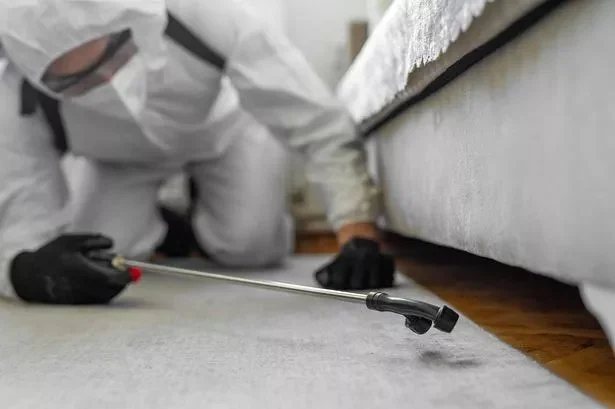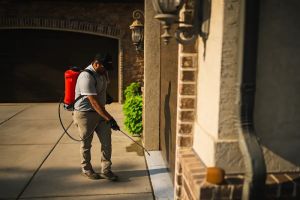
- 1. Why Avoid Poisonous Bed Bug Solutions?
- 2. Understanding Bed Bugs and Their Behavior
- 3. Natural Solutions to Get Rid of Bed Bugs
- 4. How to Prevent Bed Bug Infestations
- 5. Real-Life Case Study: Successful Chemical-Free Bed Bug Removal
- 6. Recommended Products for Bed Bug Control
1. Why Avoid Poisonous Bed Bug Solutions?
When dealing with bed bugs, many people instinctively reach for chemical pesticides to solve the problem quickly. However, these solutions can pose significant risks to the health and safety of your family and pets. Many traditional bed bug treatments contain harmful toxins that can linger in your home long after they are applied. Inhaling or coming into contact with these chemicals can lead to headaches, nausea, and in some cases, more severe long-term health effects.
Furthermore, relying on poisonous chemicals can have a negative environmental impact, affecting air and water quality. With increasing awareness of the dangers posed by synthetic pesticides, many homeowners are seeking safer, non-toxic alternatives that are equally effective in eliminating bed bugs without posing a risk to human health or the environment.
2. Understanding Bed Bugs and Their Behavior
To effectively get rid of bed bugs without chemicals, it’s important to understand their behavior. Bed bugs are small, reddish-brown insects that typically hide in cracks, crevices, and upholstery, often near sleeping areas. They feed on the blood of humans and animals, primarily at night, leaving behind itchy bites and red marks on the skin.
Unlike some pests, bed bugs do not transmit diseases, but their presence can cause significant discomfort, stress, and sleep disturbances. They reproduce quickly, with females laying hundreds of eggs in their lifetime, which makes bed bug infestations particularly difficult to control if not dealt with early.

HomeTeam Pest Defense
WoodbridgePrince William CountyVirginia
14871 Farm Creek Dr Suite K, Woodbridge, VA 22191, USA
3. Natural Solutions to Get Rid of Bed Bugs
If you're looking to eliminate bed bugs without resorting to harmful chemicals, there are several natural, non-toxic methods available. Here are some effective and safe solutions:
3.1 Heat Treatment
One of the most effective methods for eliminating bed bugs is heat treatment. Bed bugs are highly sensitive to extreme temperatures, and exposing them to temperatures above 113°F (45°C) will kill them at all stages of their life cycle, including eggs. You can use a steamer on mattresses, bed frames, and furniture to kill bed bugs on contact. Additionally, washing and drying linens and clothing at high temperatures (above 120°F) will also help eliminate bed bugs.
3.2 Diatomaceous Earth
Diatomaceous earth (DE) is a natural, non-toxic substance made from fossilized algae. It works by dehydrating and killing bed bugs when they come into contact with it. Simply sprinkle a thin layer of food-grade DE around your bed frame, baseboards, and other areas where bed bugs may hide. Leave it for a few days, then vacuum it up. While effective, DE can be messy and should be used carefully to avoid inhalation.
3.3 Essential Oils
Certain essential oils have been shown to repel bed bugs. Oils such as tea tree oil, lavender oil, and eucalyptus oil are natural deterrents for bed bugs. Mix a few drops of essential oil with water in a spray bottle and apply it to the affected areas. While essential oils are not a standalone solution, they can complement other methods and act as a preventive measure when used regularly.
3.4 Mattress and Box Spring Encasements
Another simple and effective method is to use mattress and box spring encasements. These special covers trap any existing bed bugs inside and prevent new ones from getting in. The encasements should be tightly sealed and left on for several months to ensure that any trapped bed bugs starve to death. This method is particularly useful for preventing reinfestation after treatment.
3.5 Vacuuming and Regular Cleaning
Frequent cleaning is essential for bed bug control. Use a vacuum with a HEPA filter to clean cracks, crevices, and upholstery where bed bugs may be hiding. Be sure to empty the vacuum bag or canister into a sealed plastic bag and dispose of it immediately. Regular cleaning of your bedroom and other infested areas helps reduce the number of bed bugs and their eggs.
4. How to Prevent Bed Bug Infestations
Prevention is key to keeping your home bed bug-free. Here are some strategies to help prevent bed bug infestations from taking hold in the first place:
4.1 Inspect Second-Hand Furniture
When purchasing second-hand furniture or mattresses, always inspect them thoroughly for signs of bed bugs before bringing them into your home. Look for dark spots (bed bug droppings), eggs, or live bugs. Avoid picking up used furniture from unknown sources, especially if you’re unsure about its condition.
4.2 Use Bed Bug-Resistant Covers
Invest in bed bug-resistant covers for your mattress and pillows. These covers create a protective barrier that prevents bed bugs from entering or escaping your bedding. Even if there are existing bed bugs, the encasement will trap them inside, preventing them from feeding and eventually killing them.
4.3 Seal Cracks and Crevices
Bed bugs can hide in the smallest cracks and crevices. Regularly inspect your home for gaps around windows, doors, and baseboards, and seal them with caulk or other appropriate materials. This will reduce the number of hiding spots available to bed bugs and make it harder for them to enter your home.
4.4 Be Cautious When Traveling
Bed bugs are often spread through travel. When staying in hotels or hostels, inspect the room for bed bugs, especially around the bed frame, headboard, and furniture. Upon returning home, wash and dry your clothes at high temperatures to kill any bed bugs that may have come with you. Consider storing your luggage in the bathroom, as it is less likely to have bed bugs compared to the bedroom area.
5. Real-Life Case Study: Successful Chemical-Free Bed Bug Removal
A family in California faced a persistent bed bug problem that seemed to worsen despite using chemical treatments. After switching to a non-toxic approach, they used a combination of heat treatment, diatomaceous earth, and essential oils. Within weeks, the family reported no further sightings of bed bugs. Their home remained pest-free, and they were able to maintain a safe, chemical-free living environment. The family also implemented regular cleaning and mattress encasements to prevent reinfestation.
6. Recommended Products for Bed Bug Control
If you’re looking to get rid of bed bugs without chemicals, here are some of the most effective products that can help:
- Bed Bug Mattress Encasements: These protectors trap bed bugs inside and prevent them from feeding.
- Heat Treatment Devices: Portable steamers and heating devices to kill bed bugs with high temperatures.
- Diatomaceous Earth: A natural powder that dehydrates and eliminates bed bugs on contact.
- Essential Oil Sprays: Use essential oils like tea tree and lavender to repel bed bugs naturally.
Visit PestControlHub for more information on the best chemical-free bed bug solutions and products to ensure your home remains bed bug-free.








 Wildlife Resolutions4.0 (443 reviews)
Wildlife Resolutions4.0 (443 reviews) Pest Marshals of Toledo5.0 (2 reviews)
Pest Marshals of Toledo5.0 (2 reviews) LS Rodent Proofing & Pest Control Service5.0 (4 reviews)
LS Rodent Proofing & Pest Control Service5.0 (4 reviews) Best Termite & Pest Control4.0 (16 reviews)
Best Termite & Pest Control4.0 (16 reviews) Varment Guard Wildlife Services5.0 (28 reviews)
Varment Guard Wildlife Services5.0 (28 reviews) Pestban Inc4.0 (394 reviews)
Pestban Inc4.0 (394 reviews) How to Use Monitors to Detect Pest Entry: A Comprehensive Guide
How to Use Monitors to Detect Pest Entry: A Comprehensive Guide How to Predict Which Pests Will Invade Next – Smart Pest Forecasting for the U.S.
How to Predict Which Pests Will Invade Next – Smart Pest Forecasting for the U.S. How to Conduct a Pest Risk Assessment at Home – Expert Guide
How to Conduct a Pest Risk Assessment at Home – Expert Guide How to Block Pest Entry Around Deck Joists: Effective Solutions
How to Block Pest Entry Around Deck Joists: Effective Solutions How to Safely Use Fumigation Methods: A Comprehensive Guide for Homeowners
How to Safely Use Fumigation Methods: A Comprehensive Guide for Homeowners Why Pests Are More Active After Rain: Understanding the Link Between Weather and Pest Behavior
Why Pests Are More Active After Rain: Understanding the Link Between Weather and Pest Behavior